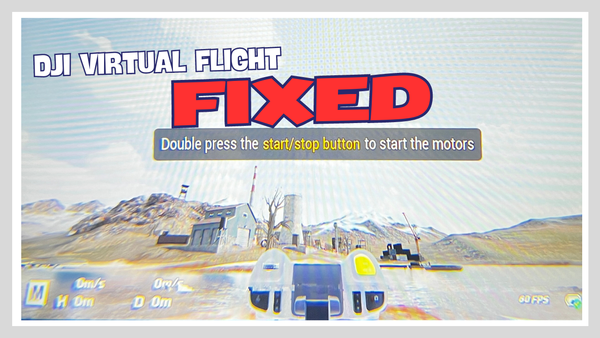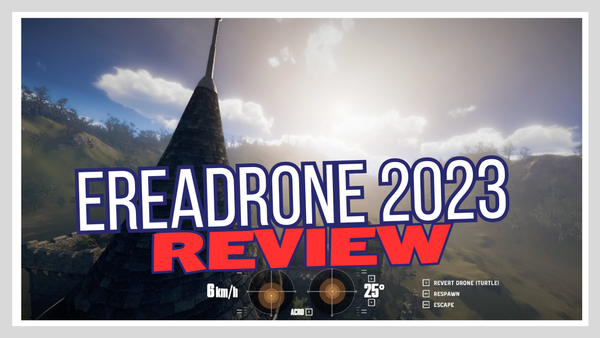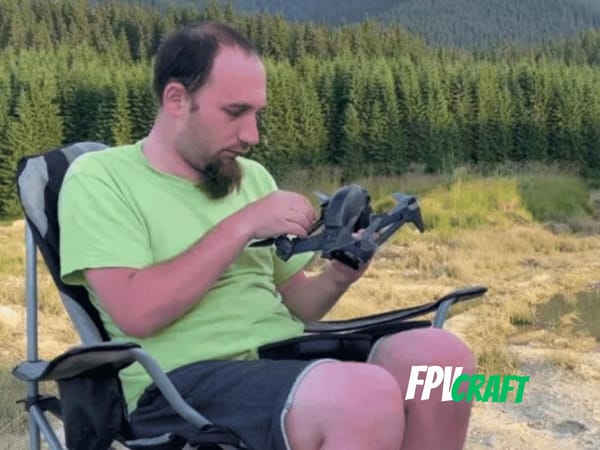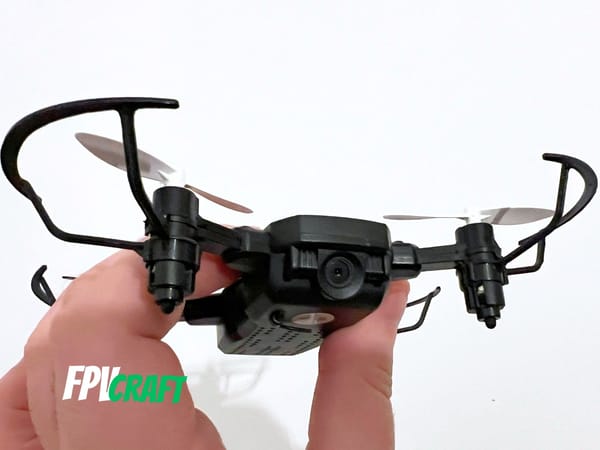DJI FPV Drone Long-Term Review
This article is an in-depth review of the DJI FPV drone after using it for the long term, with my own personal opinions shared.
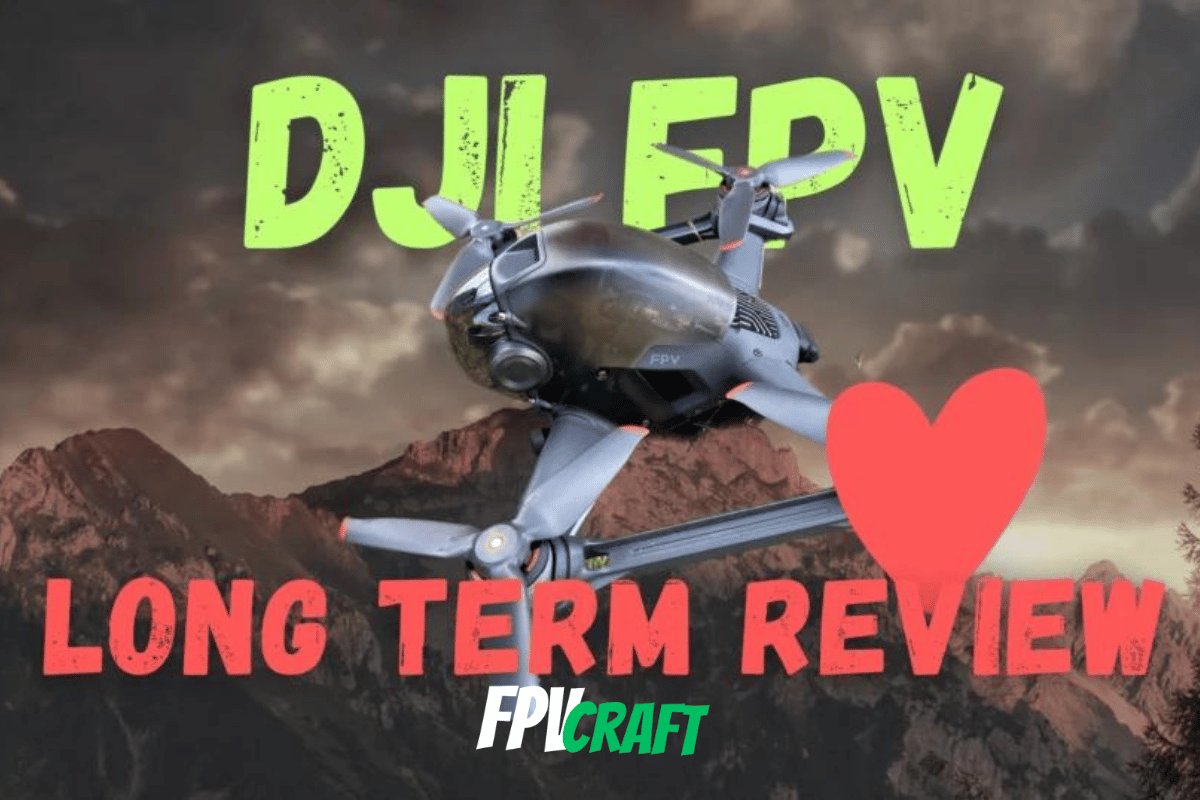
In March 2021, the DJI released the first of its FPV drones, the DJI FPV. One year and a half later, the DJI Avata was released. But the DJI FPV drone has something other FPV drones don’t have. And is not about any features but the way it flies and its smoothness.
I bought the DJI FPV drone a few months later after its release, and ever since, I have flown it many times in manual mode, normal mode, and sport mode as well. I have some excellent experience with this drone, which gives me a good opportunity to write this DJI FPV drone long-term review.
DJI and no one sponsor this review (but it has affiliate links), and it is only based on my personal experience and research regarding the drone’s functionality, and I will answer if this is still worth buying.
DJI FPV Drone. What do we know?

Before the release of the DJI FPV drone, if you wanted to get into flying FPV drones, you would have to learn more than to fly. And no, not to repair, but to deal with many issues, compatibilities, shorter range flight, no GPS rescue, unsafe Lipo batteries and charging, and many parts that had to be bought separately.
But DJI stepped in and created their first FPV drone, the DJI FPV.
The DJI FPV is a simple, ready-to-fly, powerful FPV drone that can be acquired in a kit with the DJI FPV Goggles v2 and DJI FPV Remote Controller 2. It is easy to set up and fly and has many benefits over custom FPV drones. But as well downsides.
What are the specs of the DJI FPV drone?
The DJI FPV drone, unlike custom FPV drones, is not upgradeable, and it comes with the following specs:
| Specs | DJI FPV Drone |
|---|---|
| Weight | 795 grams |
| Size | 178×232×127 mm without propellers attached |
| Max Flight Time | 20 minutes |
| Max Transmission Range | – 10 km or 3.6 miles, FCC (USA) – 6 km or 3.7 miles, CE (Europe) – 6 km or 3.7 miles, SRRC (China) – 6 km or 3.7 miles, MIC (Japan) – According to DJI, the max flight distance is 16.8 km (10.4 miles) in windless conditions. |
| Max Flight Speed | 140 km/h (87mph) in manual mode |
| Wind Resistance | Up to 49km/h or 31mph |
| Camera Specs | 1/2.3 inch CMOS capable of recording up to 4k at 60 frames per second and photographing at a 4k resolution |
| Gimbal | Single-axis gimbal; electronic roll axis for drone tilts up to 10 degrees. |
| Flight Modes | Normal mode, sport mode, and manual mode with the ability to go acro (disable m-mode attitude limit) |
| Sensors | Frontal anti-collision sensors and downward dual-vision sensors + ToF and auxiliary light. |
| Max MicroSD Card | Can support MicroSD cards up to 256GB |
| Still in Production? | At the moment of writing this article (June 2023), the DJI FPV drone is still in production. |
The DJI FPV specs look pretty nice on paper, in special that the drone is smooth, fast, with good wind resistance, and capable of extraordinary long-range flights. But how are these in reality?
Before we get into details of each characteristic of the drone and share my personal experience with each of them, I want to go a little bit over the drone’s compatibilities.
DJI FPV Drone compatibility
The DJI FPV drone to function will need mandatory a remote controller and FPV goggles because it’s an FPV drone.
A standard drone can fly without goggles, but with FPV is not the same.
Now, what is the DJI FPV drone compatible with?
- As for the remote controller, the DJI FPV drone is compatible with only one RC: The DJI FPV Remote Controller 2. There are no other controllers compatible with the DJI FPV drone as of now.
- The DJI FPV drone comes in a kit with the DJI FPV Goggles V2, which is perfectly compatible with it. Moreover, after Avata’s release and afterward, the DJI FPV also became compatible with the DJI Goggles 2. Those headsets are the only ones compatible with the DJI FPV drone.
At this time, the DJI FPV drone is compatible only with one remote controller and two headsets. It is challenging, if merely impossible, to change internal parts to be compatible with the DJI FPV drone, such as another VTX module or radio receiver.
How does the DJI FPV drone fly in manual mode?
I have flown the DJI FPV drone many times in manual mode, at different angles degrees, but most consistently at around 20 degrees up camera inclination.
The DJI FPV drone is fast, way faster than Avata, and accelerates exceptionally quickly.
If you are not careful, the drone may smash into something in particular if you fly in limited-space areas. That’s why I recommend (as I do) flying the DJI FPV drone only in large areas, such as mountains and fields.
Even at 20 degrees angle, the DJI FPV drone is high-speed. I never went beyond 30 degrees because it was difficult to control.
When you first get the drone, before your first flight, I recommend you do two things:
- Have some training in simulators, such as Liftoff (I don’t recommend much the DJI Flight Simulator, it’s not very realistic compared to the drone’s mechanics)
- Please change the stock rates because the drone is highly sensible, and a beginner may even crash the drone. There are many tutorials with lower rates; Here are my rates and very decent ones to use when flying in manual mode
» READ MORE: Tips to Consider Before Your First DJI FPV Manual Flight
Does the DJI FPV drone fly well in normal mode?
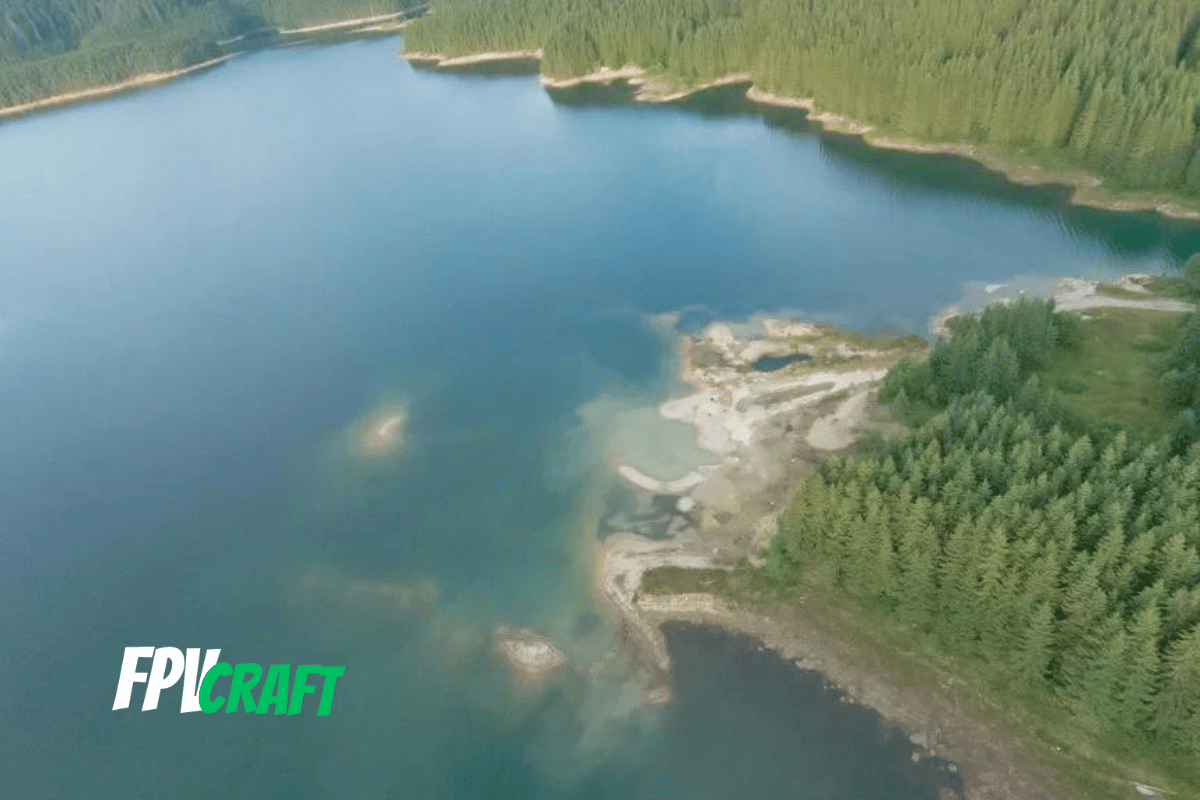
I have flown the DJI FPV as well in normal mode several times just to enjoy the VR-like experience while watching everything down from above.
The DJI FPV drone works well in normal mode, but don’t expect wonders.
For instance, the biggest issue, in this case, is with the camera gimbal, which is blocked at 55-60 degrees down (you cannot go entirely 90 degrees), which is terrible if you think to create some cinematic content in normal mode.
On the other side, although Avata supports tilting the camera down to 90 degrees, you will see the frame in the video.
But other than that, the flight time was decent, much more than flying in manual mode, and was stable at hovering.
If you have flown standard drones with the image displayed on the screen, you will have to adapt to using goggles. That’s why it’s always important the first time you fly the DJI FPV drone to be in normal mode to accommodate.
Please remember that the gimbal is not a 3-axis and is a single-axis FPV gimbal (move only up and down) that may impact the footage when you turn left or right at higher rates and the DJI FPV drone inclination goes beyond 10 degrees.
DJI FPV has an electronic roll axis, and if you smoothly turn your drone left and right at slower speeds, the footage will look good, but if not, the entire image will tilt left or right.
» READ MORE: Can you fly DJI FPV Drone in Normal Mode? Pros and Cons
What about flying DJI FPV in sport mode
I have flown the DJI FPV in sport mode only a few times, and not much because I am not a fan of sport mode myself.
When you fly in sport mode, the frontal sensors will be disabled. Your drone will be more sensitive to maneuvers and will catch higher speeds than the normal mode but will act similarly.
But with drones catching higher speeds and being more sensible, the issue with the tilt we discussed above will apply much more in this case.
The drone will definitely tilt more than 10 degrees most of the time when flying at higher speeds in sport mode. But I had seen a few people actually managing to create cinematic content when flying the DJI FPV in sport mode and with these specific tilts.
Besides that, the battery will last the longest in sport mode, so if you’re looking to fly long-range or get out most of the battery, the sport mode is ideal.
» READ MORE: DJI FPV Normal Mode vs. Sport Mode (explained)
Can you freestyle with the DJI FPV drone?
The DJI FPV drone has unique aerodynamics, and I never had trouble freestyle, both at higher and lower speeds, taking sharp corners or flips, etc.
Compared to Avata, which is terrible to freestyle with, the DJI FPV drone is, in fact, excellent.
But if I were you, I wouldn’t freestyle much with the DJI FPV drone other than at higher altitudes or places with low risks of crashing because once you hit this drone, that’s it.
I will cover more about the durability of the DJI FPV drone later in this article.
However, in order to freestyle with the DJI FPV drone, you need to do some modifications, such as changing from “manual” to “acro mode.” But first, let me quickly explain those.
DJI FPV names the FPV “acro” mode as “manual mode” but is not fully acro as you need to turn off one of the settings: The M-Mode Attitude Limit.
This will restrict the drone from flipping over, and you’re flying more like an “angle mode” in FPV drones.
Once you deactivate this, then you can indeed fly the DJI FPV drone in acro mode.
Can you race with the DJI FPV drone?
The same as trying to freestyle with the DJI FPV drone, you can indeed race.
But if you’re trying to race with this drone, you will more than likely crash it. And the DJI FPV drone is not that resistant, which may put your drone in danger of sending for repairs.
However, hypothetically, you can race quite well with the DJI FPV drone, and it was tested and made a YouTube video about it by the guys from Rotor Riot.
But for that to work, you will have to change more than a few settings and rates to match what others use in FPV racing.
» Related: Can You Race With DJI FPV Drone?
How good is the DJI FPV camera for filming?
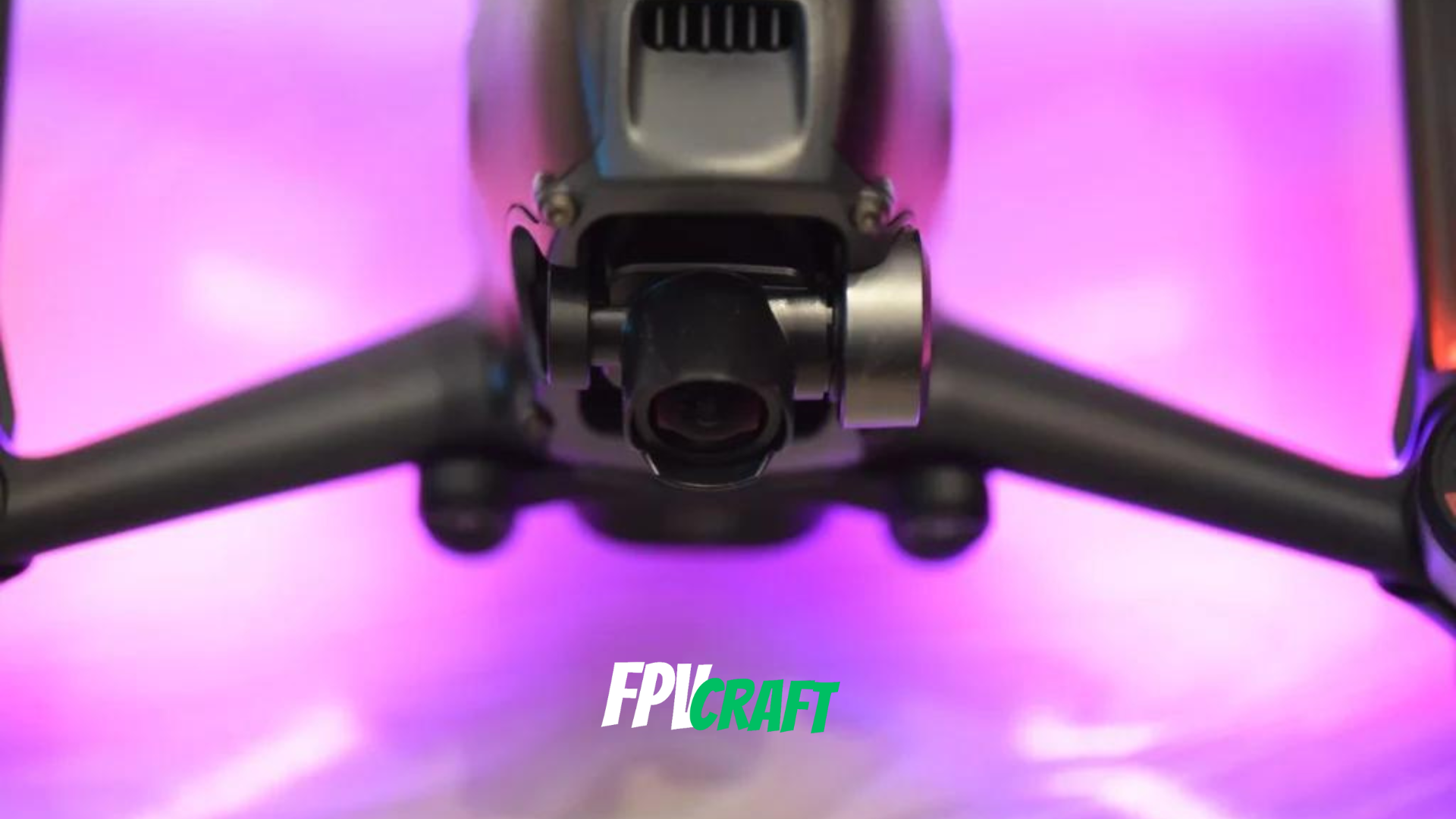
Decent. That’s all I can say.
Because it was released at the beginning of 2021, the DJI FPV drone does not benefit from larger camera sensors like the Mini 3/Mini 3 Pro and other drones.
But even like this, the 1/2.3-inch sensor is quite decent, and you are able to film in 4k at 60 frames per second.
However, having this resolution doesn’t mean the camera will deliver top-notch videos.
The DJI Avata camera is way better than the DJI FPV drone. But even this is decent, and you are capable of recording some more than decent videos.
The advantage of the DJI FPV is that it can carry a GoPro, which is mainly recommended if you are into creating cinematic content.
I made a short cinematic film with video fragments I recorded with my DJI FPV drone at 4k at 60 frames per second.
Is the DJI FPV camera any good for photography?
No. I mean, the camera could be capable of photography, but FPV drones are not meant for that; this includes both DJI FPV and Avata.
However, you can capture snapshots at 4k resolution. But in my opinion, it is much better to film and take out the preferred images from the video.
It is not the same, but you cannot do any kind of professional photography with the DJI FPV camera.
Thinking that we indeed have the normal and sport modes, DJI should make this drone decent for photography and push more towards being a hybrid FPV-standard GPS drone.
But now we have what we have.
Long story short, the DJI FPV is incapable of any type of professional photography. Maximum resolution is equivalent to 4k photographed in .jpeg format only.
DJI FPV drone transmission system
With the DJI digital FPV transmission system, the drone is capable of flying long-range over vast distances.
But before that, let’s see what it is capable of, shall we?
The DJI FPV drone can work both on 2.4 GHz and 5.8 GHz frequencies for video transmission.
The DJI FPV Goggles v2 has two live view modes with the DJI FPV drone:
- Low-Latency Mode: 810p/120fps ≤ 28ms
- High-Quality Mode: 810p/60fps ≤ 40ms
I personally use the low-latency mode all the time because of the higher framerate and better motion observed in the goggles. Also, I have set it to switch between 2.4 GHz and 5.8 GHz as required automatically.
As for the channel, generally, I let it on auto unless I fly in suburban areas with significant WiFi interference.
The transmission module in the DJI FPV drone is responsible for both sending low-latency video links to the goggles and as well to receive radio input from the DJI FPV Remote Controller 2.
Therefore, to wrap this up, the video transmission module on the DJI FPV drone, practically, is excellent. I never had a problem flying long-range, even in Europe with more restrictions.
Is the DJI FPV drone any good for long-range flights?
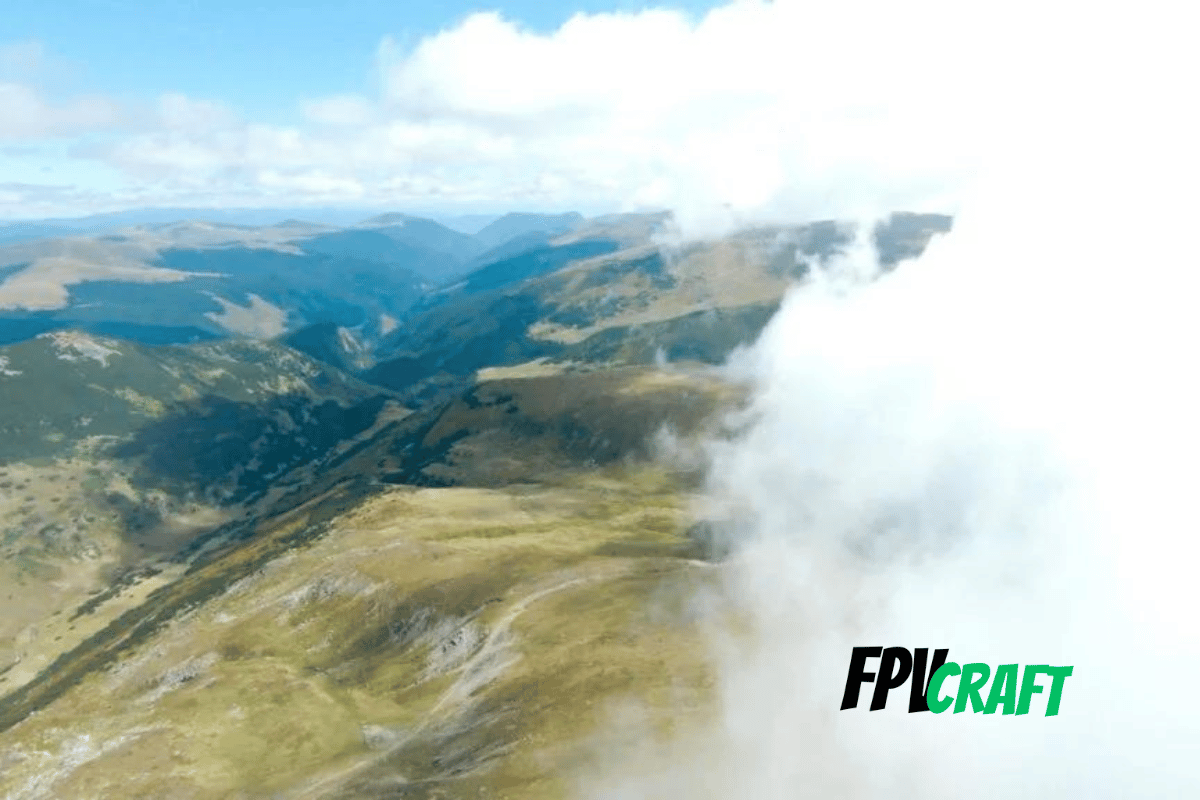
That we mentioned a little bit about long-range capabilities with the DJI FPV drone and its video transmission module; let me get more in-depth about it.
The DJI FPV is capable of fantastic long-range flights without any issues and is meant to be flown over landscapes and mountains and capture nature as never before.
But there are a few things that can contribute to the long-range capabilities of the DJI FPV drone.
And the main and only one we want to mention here is the political restrictions.
For instance, in the USA, the DJI FPV drone has a transmission distance of up to 6.2 miles, whereas in Europe, China, and Japan, only up to 3.7 miles.
It all depends on where you fly the drone.
The drone, with the DJI FPV Goggles V2, can have extraordinary long-range transmission without transmission power restrictions.
When I was flying the DJI FPV drone in my country in Europe, in an area with low to no interferences, I could go little beyond 2 miles before the video feed started to lag. I could squeeze another mile, but I didn’t want to risk it. That’s the farthest I flew my DJI FPV drone.
If you want to read more about the long-range capabilities of the DJI FPV drone, we recommend you check the following article:
» READ MORE: How far can you fly the DJI FPV Drone?
Stability and aerodynamics of the drone
This is yet the strong point of the DJI FPV drone.
Have you seen how ugly it looks?
Joking just. But now, for real, the design is absolutely unique; it has a petite body and is heavy that can face some pretty strong winds, and yet until now, I have never had any problems with the drone’s stability.
In normal mode, the drone was perfectly hovering (as with any other standard GPS drone) without any issues.
When flying in manual mode, I was doing some freestyle, deep divings, and taking many sharp turns. The drone remained remarkably stable, never lost control from the drone’s perspective, and I was able to maneuver it smoothly and capture cinematic content.
Wind speed resistance of the DJI FPV drone
As mentioned, the drone is very heavy and packed into a compact body with some unique aerodynamics, which is advantageous for resisting high winds.
I had flown as well in normal mode in some severe winds beyond the maximum recommended by DJI of 31mph (49km/h). The drone was able to face it well and remained stable, both when hovering and flying in this wind.
As for manual mode, you don’t really have many wind speed limits with this drone. DJI recommends flying below the maximum speed resistance in any mode, but knowing the power and aerodynamics of the drone, this is capable of more in manual mode. And also, let’s not forget the DJI FPV is a heavy drone, so the wind can’t take it easy.
FPV drones, in general, are more robust when flying in high winds because you will not rely on drone stability to hover – you will fly at high speeds.
» READ MORE: DJI FPV Wind Resistance (explained)
How long can the DJI FPV drone fly?
The DJI FPV drone is rated to fly up to 20 minutes per battery pack. As with any drone, you will never be able to reach that flight time.
In exchange, an accurate report from me would be that in manual mode, the DJI FPV drone flies around 12 minutes, maybe less, depending on how you push the throttle up, and no more than 15 minutes when flying in normal mode.
Of course that many factors can influence how long your DJI FPV can fly, from weather conditions and temperature to pilot flight style and altitude.
You may expect the DJI FPV drone to fly longer, but that’s not the case with FPV drones. The custom FPV drones, generally, can fly for about 3-5 minutes and rarely more.
I would recommend looking over the following articles if you want to learn more about the flight time of the DJI FPV drone and FPV drones in general.
» READ MORE: How Long Can DJI FPV Fly?
» READ MORE: How Long Can an FPV Drone Fly?
Are the DJI FPV drone batteries any good?

The DJI FPV comes with 6s batteries with a capacity of 2000mAh and a maximum discharge rate of 10c. The battery is pretty heavy at around 300 grams, which is more than the entire DJI Mini 3 Pro drone.
When I got the drone, I bought it as a fly-more pack. There was a period over a couple of months due to the weather and other projects, I was unable to fly the drone; all the batteries were 100% percent, but shortly, two of them failed and discharged to zero percent, whereas the third battery remained stable at around 50%.
So I could do absolutely nothing; I had to discard two DJI FPV batteries which are highly expensive. This shouldn’t happen, but it happened.
The batteries are good, strong, and intelligent, but beware if you want to store them long-term.
If you want, you can read more on the “How to protect your DJI FPV batteries” article.
How fast can the DJI FPV fly?
Compared with DJI Avata, the DJI FPV is a drone capable of reaching incredible speeds.
And compared to custom FPV drones, the DJI FPV is still fast, slower than some and faster than others.
Reaching a maximum speed of 87 miles per hour or 140km/h, the DJI FPV is faster than a car on a motorway (equals highway).
That may be problematic if you try to fly this drone in tight areas where you don’t have much space to fly, and it is also difficult to fly at slow speeds.
The speed of the DJI FPV drone may be advantageous, especially if you’re flying long-range, so you can reach your destination quicker but never throttle the drone at maximum.
As for normal mode, the DJI FPV can fly at 15 m/s and 27 m/s in sport mode.
While flying in manual mode, there is no limit to ascent or descent speed.
As a personal note, the first time I took off in manual mode with this drone, I did it at an angle of 30 degrees. It was a very open area in the mountains, and I had never expected the drone to accelerate and reach those speeds so quickly.
Durability to crashes of the DJI FPV drone
Many FPV drones can resist a specific level of crashes, including the DJI Avata, which is durable.
But the DJI FPV drone has absolutely zero durability. The arms are very fragile, and if you have even a simple crash with this drone, these arms may break into pieces.
Repairing the DJI FPV drone may be slightly tricky for beginners but not that difficult for more experienced pilots.
The good thing is that you can find parts (new and 2nd hand) for the drone, including the vulnerable arms and motors.
I had the luck never to crash the DJI FPV drone, but I was always cautious when flying it and didn’t take any significant risks. Only once, I landed it on an inclined hill and started rolling down to the valley. The drone remained intact, but all the propellers were bent.
Can we increase the crash durability of the DJI FPV drone?
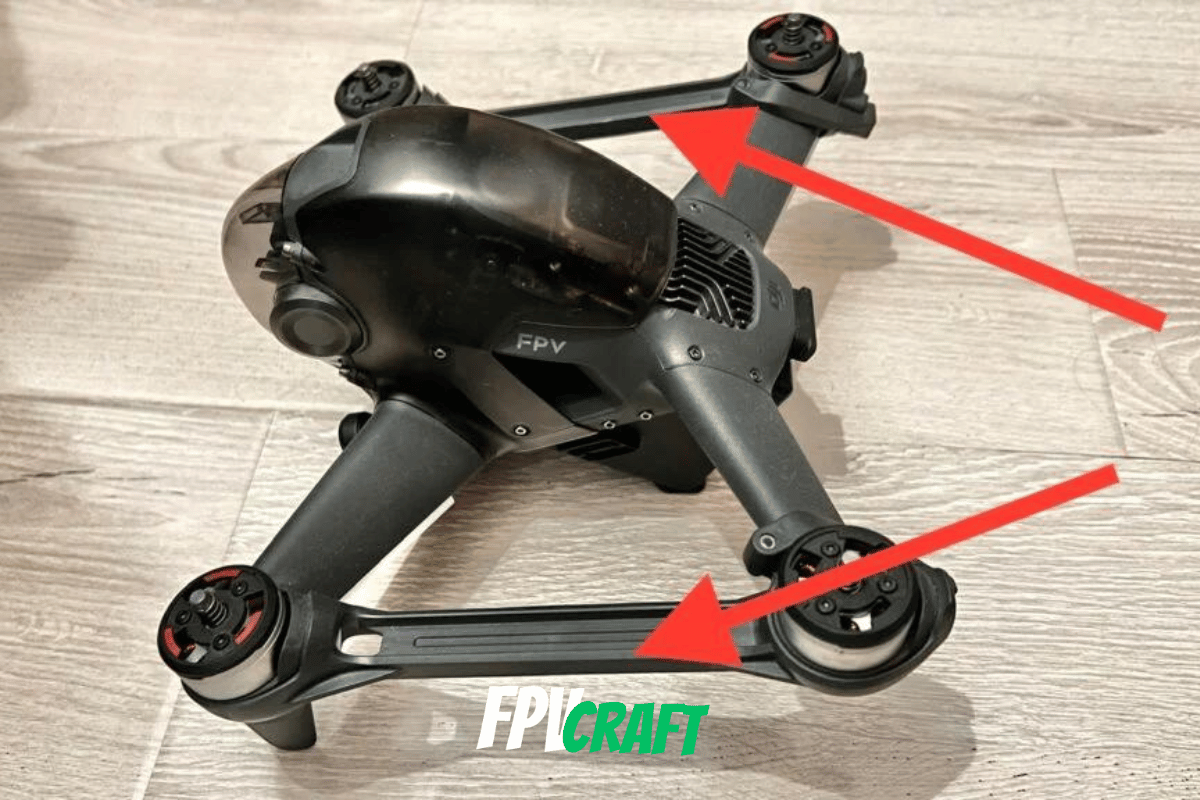
There is a method to increase the crash durability of this DJI FPV drone.
But it will not guarantee that the drone will be much more durable than before.
Anyhow, the idea is to connect the front with the back arms with some specific accessory that should strengthen the arms in case of a crash.
The weight added is very little to make any difference, but the drone will indeed not survive a massive crash anyway.
I wonder, if I didn’t have those connecting arms when my DJI FPV rolled down the valley, could it break the arms with motors?

DJI FPV Drone Arm Bracers
- Easy to assemble and disassemble, the DJI FPV Drone Arm Bracers effectively enhance drone arm strength and reduce the risk of drone arm damage.
This is an affiliate link. We earn a commission if you make a purchase, at no additional cost to you.
Should you get the DJI FPV drone with DJI FPV Goggles v2 or DJI Goggles 2?
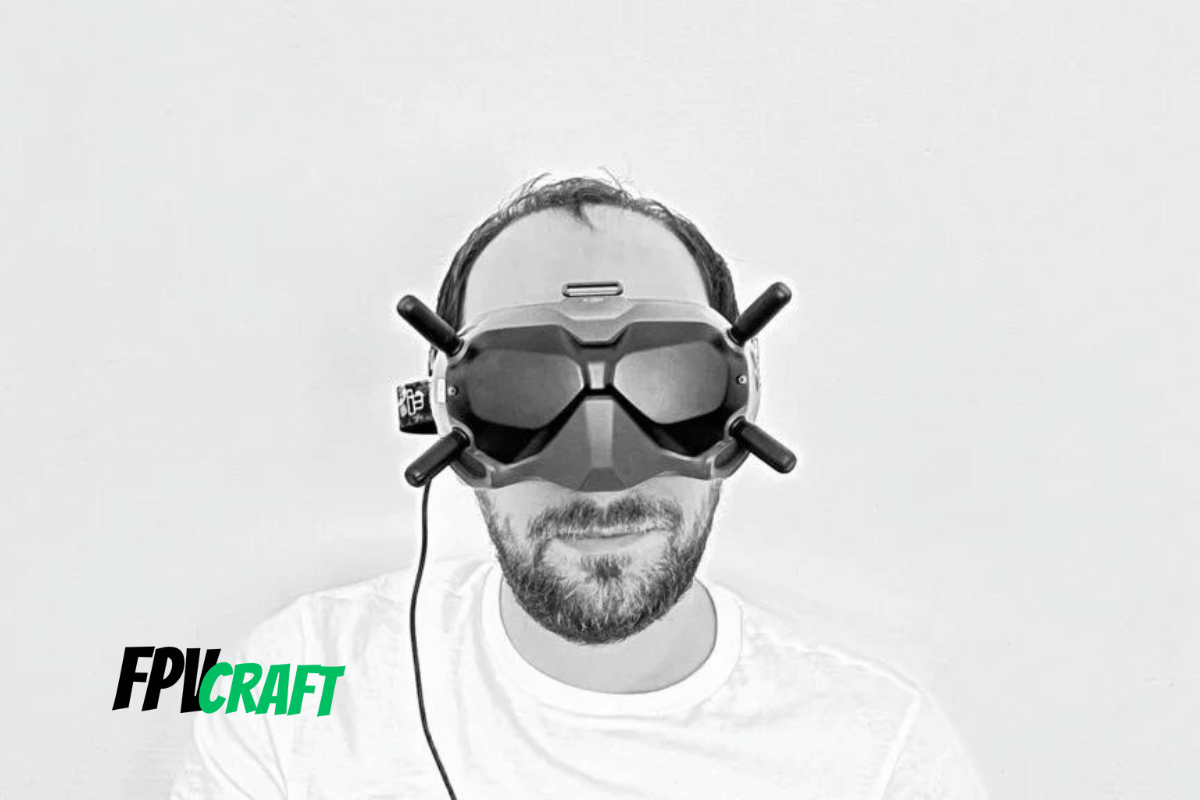
The DJI FPV Goggles V2 are the original headsets that come with the DJI FPV kit (simple and fly more).
The DJI Goggles 2 and Integra are the ones designated for the DJI Avata.
If you care about portability, then I recommend you go with the Goggles 2, which is fully compatible with the DJI FPV drone.
But generally, myself and many FPV drone pilots will recommend the DJI FPV Goggles V2 with the DJI FPV drone because it may come with some advantages, such as a higher framerate, a larger screen, and the ability to add an analog module to fly analog drones as well.
Is the DJI FPV Remote Controller 2 any good?
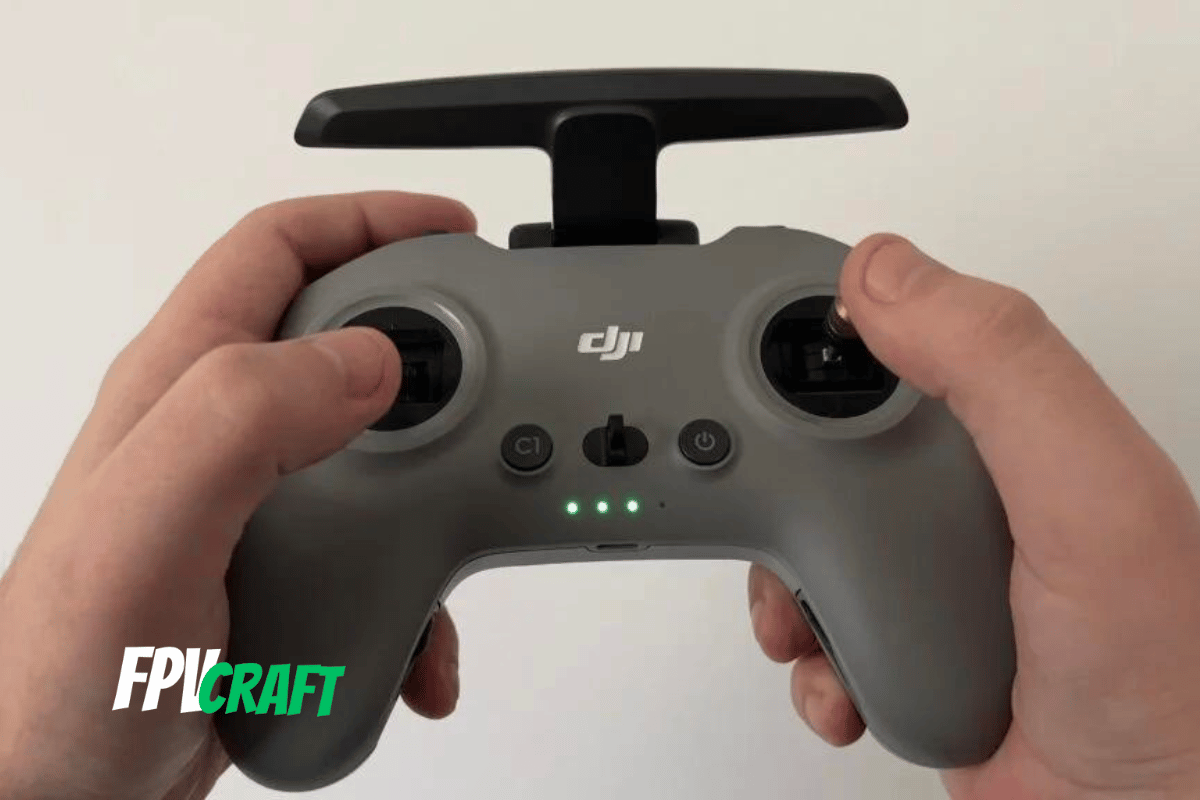
Before this, I had a FrSky Horus x10s Express remote controller, which is massive in size with premium joysticks.
At first, when I touched the joysticks of the DJI FPV remote controller 2, I thought they were terrible quality, but I couldn’t believe how wrong I was.
Now if I can, I would like all my FPV drones to fly with this remote controller because it is so smooth and sensible, and I simply got used to it from flying the DJI FPV and practicing in Liftoff Simulator.
I love the build quality of the remote controller; the battery lasts quite some time, has excellent transmission range, and, as mentioned, the joysticks are very smooth.
The only thing is that I removed the original sticks and put in some custom long sticks for flying pitch.
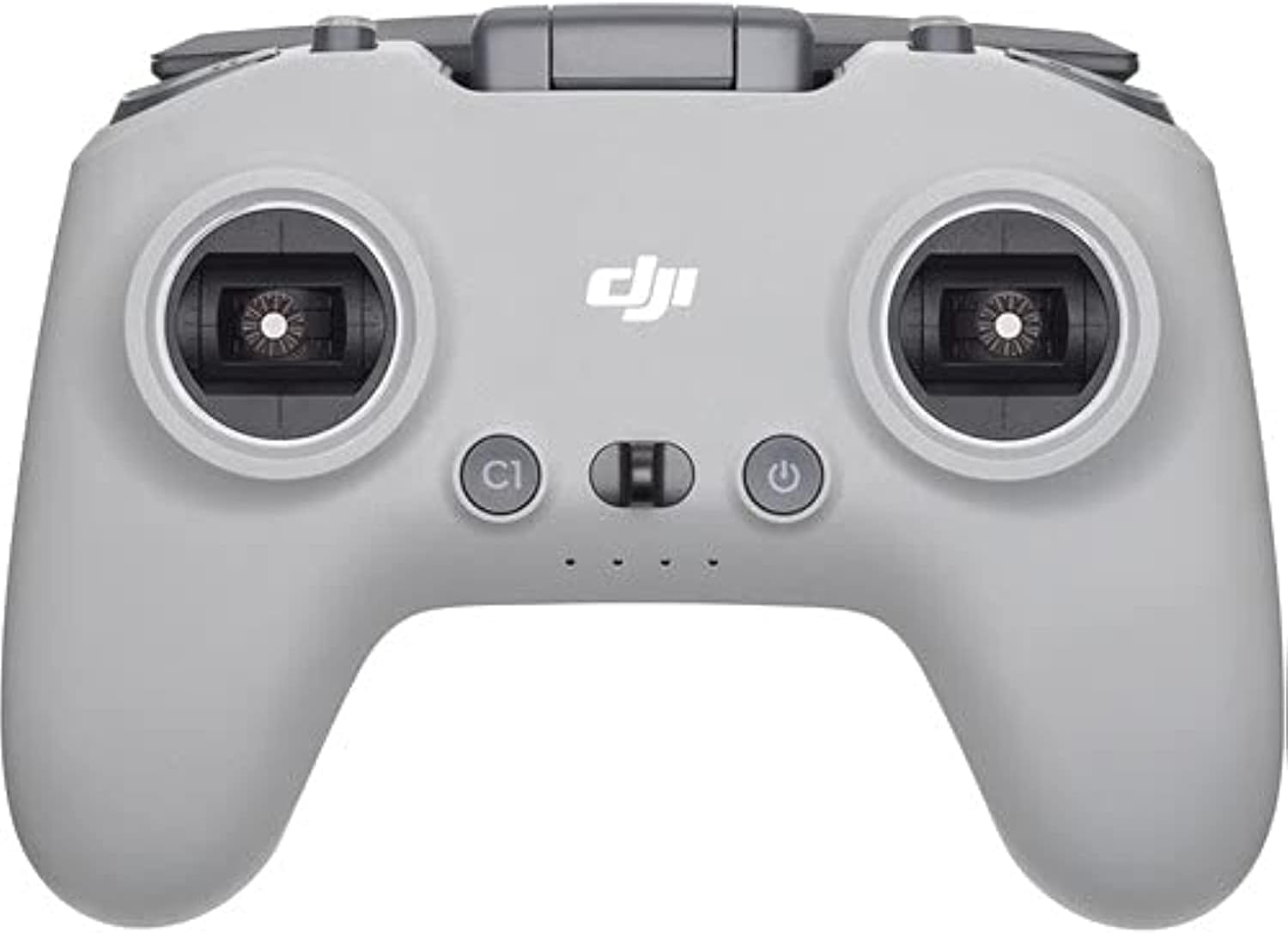
DJI FPV Remote Controller 2
The DJI FPV Remote Controller 2 is compatible with the DJI FPV drone, DJI Avata, and many FPV Simulators such as Liftoff, Velocidrone, DRL, etc.
This is an affiliate link. We earn a commission if you make a purchase, at no additional cost to you.
» READ MORE: Pinch or Thumbs When Flying FPV Drones?
Is it better the DJI FPV drone or DJI Avata? and Why?
This is an entire topic to cover because both are fantastic FPV drones, with DJI Avata being the newer one.
But to wrap this up, I would recommend the following:
- Go for the DJI FPV drone if you want to fly long-range over fantastic landscapes, over mountains and valleys, and in high winds and high speed.
- Go for the DJI Avata if you’re looking for a smaller portable drone to fly closer to people and objects and in forests and places other drones cannot fly. And as well, if you’re looking for an excellent crash-resistant FPV drone. Remember that the DJI Avata is a cinewhoop with strong duct guards.
Is the DJI FPV drone still worth buying?
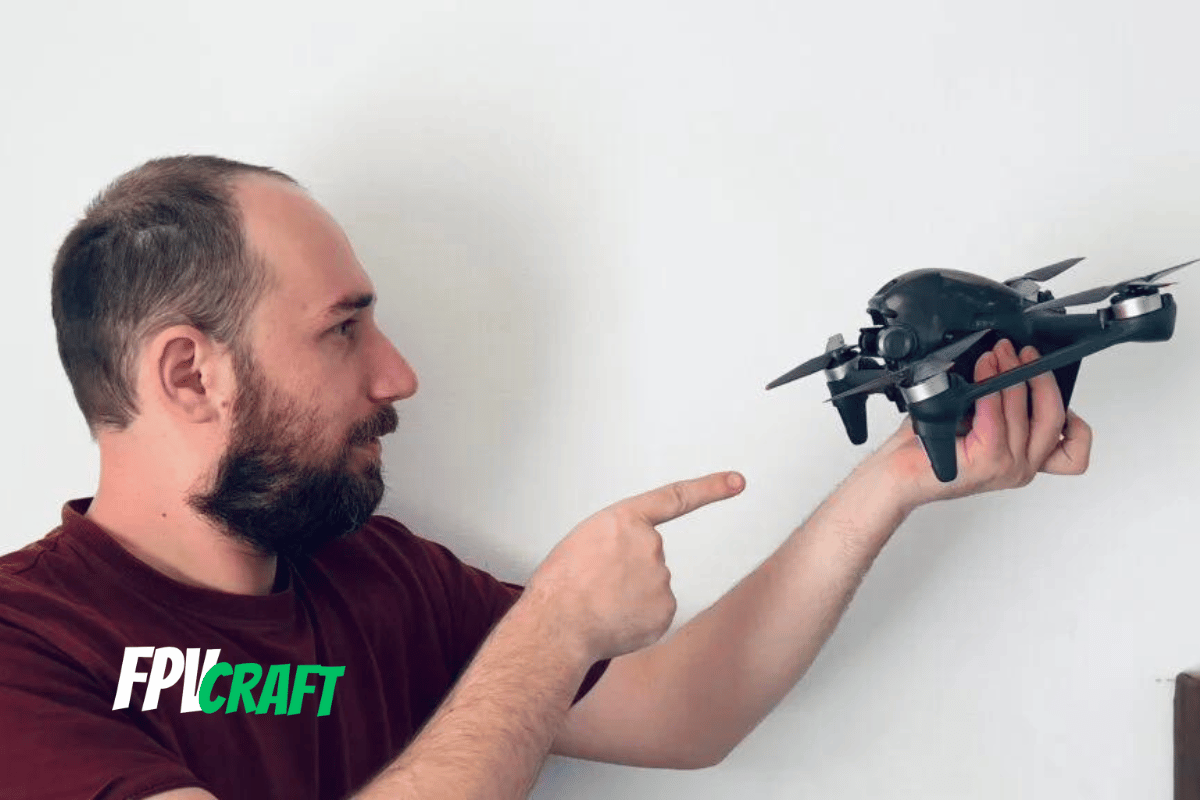
I hope not to be wrong, but in my personal opinion, the DJI FPV drone is still worth buying even now in 2023 and beyond if this will fit your needs to explore stunning landscapes long-range with an FPV drone safer to fly and with excellent safety features.
The point is that the DJI FPV drone only applies to a small number of FPV drone pilots. Many drone pilots go for custom FPV drones, but if you are a beginner in FPV and you have the financial situation to acquire the DJI FPV drone kit, then this drone would be a perfect fit.
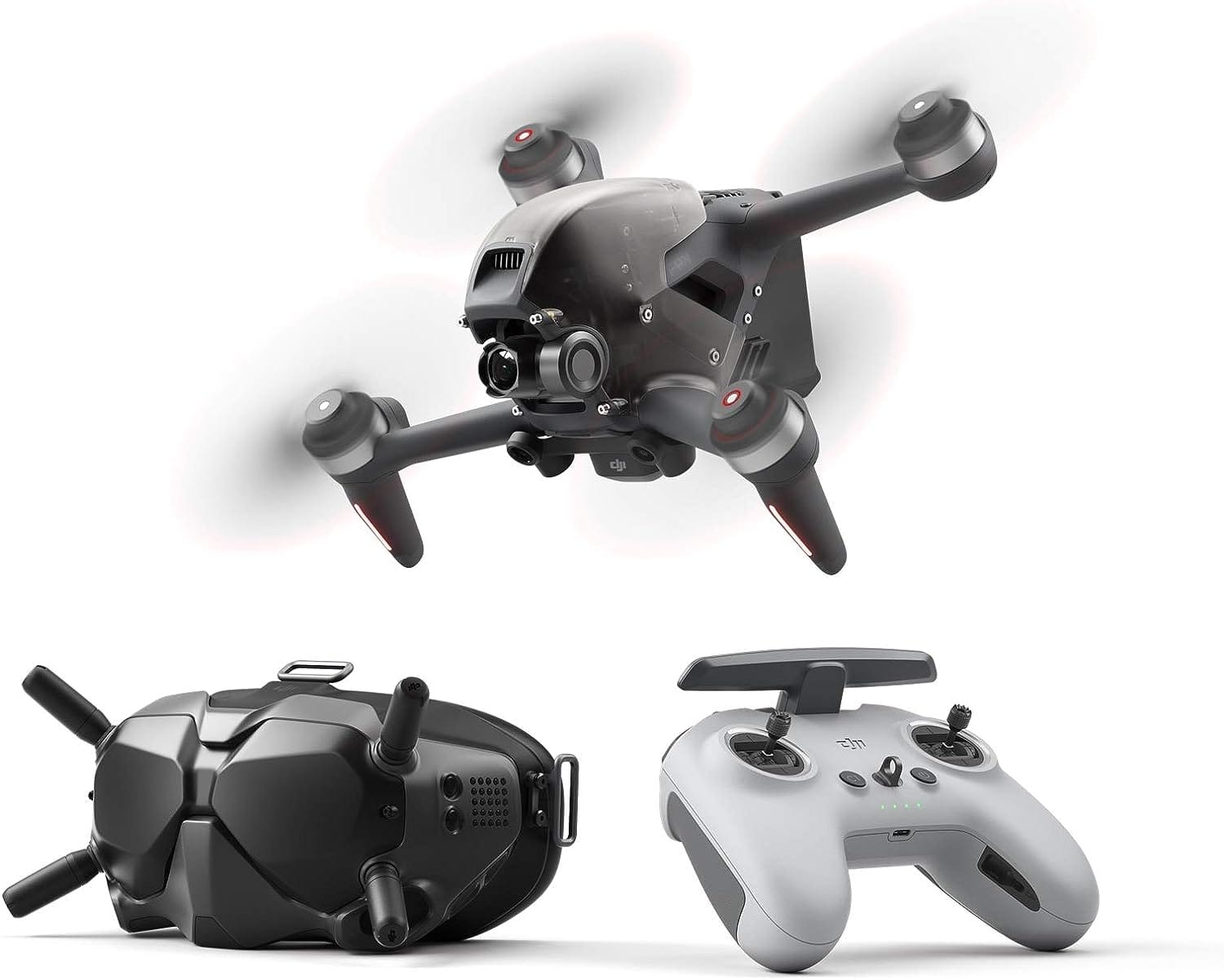
DJI FPV Drone
- IMMERSIVE FLIGHT EXPERIENCE
- 4K/60FPS VIDEO
- BRAND-NEW S MODE
- ADVANCED SAFETY FEATURES
- OCUSYNC 3.0 TRANSMISSION SYSTEM
This is an affiliate link. We earn a commission if you make a purchase, at no additional cost to you.
Will DJI release any similar FPV drones in the future?
We’re not sure because there are no rumors yet, but likely the FPV line from DJI will not stop at Avata. We may expect in the future other FPV drones to be released by DJI; however, nothing is confirmed as of now.

